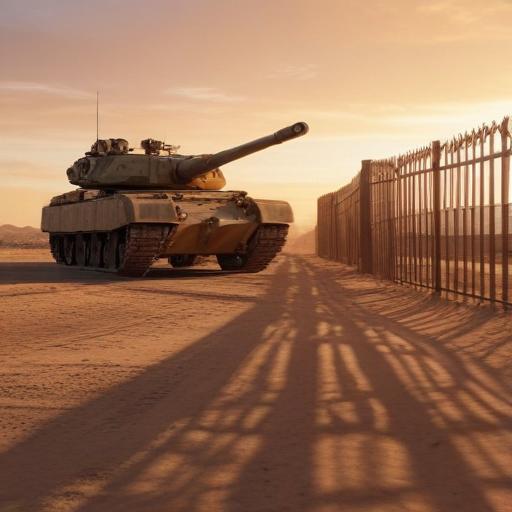An army scout maneuvers an advanced optical scope from within an armored vehicle stationed at the US-Mexico border in Arizona, tracking a figure attempting to cross the border wall. As the figure retreats upon the arrival of US Customs and Border Protection, the scene underscores the active military presence in deterring illegal immigrant crossings following former President Trump’s emergency declaration that increased military involvement at the border.
Sgt. Ana Harker-Molina, part of the patrolling infantry unit, acknowledges the monotonous nature of their mission yet expresses pride in serving the country and preventing crossings simply through their presence. Troop deployments in this region have surged to approximately 7,600 personnel, involving various military branches as illegal crossings have, paradoxically, reached a 60-year low. Trump’s administration has refined its strategy to include an additional funding of 3,000 border patrol agents, offering significant signing bonuses to strengthen border enforcement.
A command center has been established at an army training base near the Huachuca mountains, optimizing coordination among military units. Historically, border control has been managed by civilian forces; however, recent designations of militarized zones have granted soldiers the authority to apprehend individuals accused of trespassing on military property. Brigadier General Scott Naumann emphasizes the military’s operational flexibility, allowing rapid deployment in areas where illegal activity is anticipated.
With an amassed fleet of armored vehicles, helicopters, and drones, the military’s technology is geared toward spotting illegal border crossings, while engineers work to further secure the border with concertina wire. The focus remains on intercepting “got-aways,” those who manage to evade authorities, and ensuring that illegal crossings do not see a resurgence as seasonal weather changes.
Experts note that this military expansion serves as a “force multiplier” enabling border patrol agents’ presence further into interior areas, adding efficiency to enforcement efforts. The dual approach of military and border patrol demonstrates a comprehensive, albeit controversial, strategy aimed at bolstering national security and addressing immigration issues.
This coordinated effort reflects a significant shift towards militarized border enforcement and raises questions about the implications this has for civilian law enforcement, hinting at deeper discussions around immigration policies and national security in the future.
